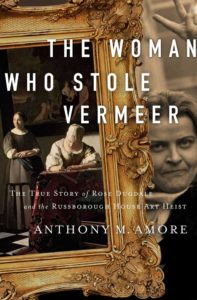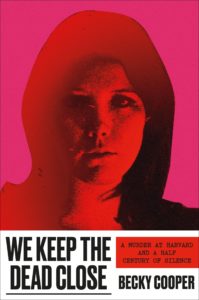Here are the CrimeReads editors choices for the month’s best nonfiction crime books.
*

Anthony Amore, The Woman Who Stole Vermeer (Pegasus)
In 1974, Rose Dugdale led a heist at the Russborough House in County Wicklow, Ireland. Among the paintings stolen were Vermeer’s Lady Writing a Letter with Her Maid, one of only two of the artist’s paintings in private hands (the other belonged to the British royal family). The crime was peculiar for several reasons: it marked one of the very rare occasions of a woman-led art heist, and it was done in the name of radical politics. Dugdale was a PhD and an heiress who had taken up the cause of Irish republicanism. In this fascinating new book, Amore, the Director of Security and Chief Investigator at the Isabella Stewart Gardner Museum, the site of another notorious heist, takes a look at the life and crimes of Dugdale. Stripping away the distortions of her legacy and focusing on Dugdale on her own terms, Amore creates a compelling, illuminating portrait of a woman of deep conviction and daring. He has an uncommon nuance in his analysis, and nobody can surpass him for expertise when it comes to the theft of priceless art. The story he tells is a complex one of morality, transgression, and invention.

Becky Cooper, We Keep the Dead Close (Grand Central)
In 1969, a Harvard student named Jane Britton was found bludgeoned to death. It was a momentous year at the university. Student protests were sweeping the country, and Harvard was merging with its sister school Radcliffe. Britton was an ambitious student focused on anthropology, and after her killing, there were rumors that it had something to do with members of the department. Forty years later, Becky Cooper heard about the death and the story haunted her. How could it remain unsolved? What did the whispers about the anthropology department mean? In We Keep the Dead Close, she investigates the brutal murder, interrogates its legacy at the university, and reflects on the enduring power of violent ends. The result is a haunting story about power dynamics at an American institution that still hasn’t fully reckoned with the tragic events of 1969.

Efrem Sigel, Juror Number 2 (Writer’s Press)
In November 2017, Efrem Sigel reported for jury duty in New York City, thinking like many others that he would eventually be dismissed. Instead he was seated on the jury for The People v. Abraham Cucuta, a multiple murder case out of East Harlem. After the trial, the events that led to those killings stayed with Sigel, and he eventually found himself inspired to investigate further. He went to speak with neighbors, police, and local leaders, and eventually produced this layered, penetrating book about a community torn apart.

Thomas Doherty, Little Lindy Is Kidnapped (Columbia)
Doherty’s cultural history of the Lindbergh kidnapping, and the family’s rise through the different sectors of American celebrity, is a fresh take on a familiar crime, with the focus on media coverage. A persuasive case is made that the modern concept of and approach to breaking news was born in that era in 1932, when news reporters kept the nation glued to the fate of “Little Lindy.”

John E. Douglas and Mark Olshaker, The Killer’s Shadow (Dey Street)
John E. Douglas, famous for his groundbreaking work as a criminal profiler for the FBI, and for the many fictional and semi-fictional stories he and his work have inspired, is back again with another thoughtful report on a dark chapter in recent American history. In 1977, Joseph Paul Franklin shot at the worshippers leaving a Midwestern synagogue. He was a committed racist and anti-semite and when he went on the run following the shooting, he targeted civil rights leaders and individuals who clashed with his deeply bigoted worldview. Douglas joined the investigation as it became a manhunt and now, forty years later, reflects on its broader meaning in the context of dangerous cultural shifts that have swept across the U.S. in intervening years.

















